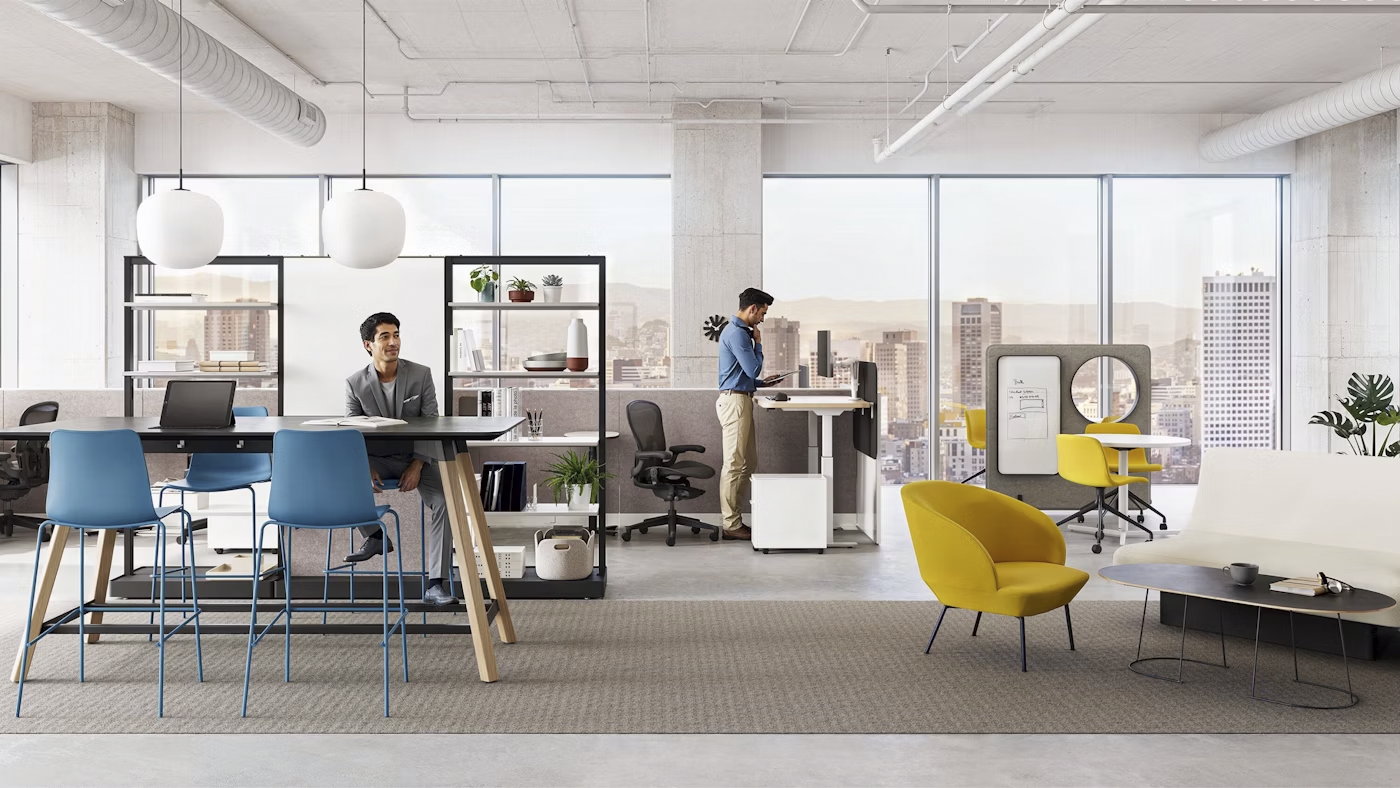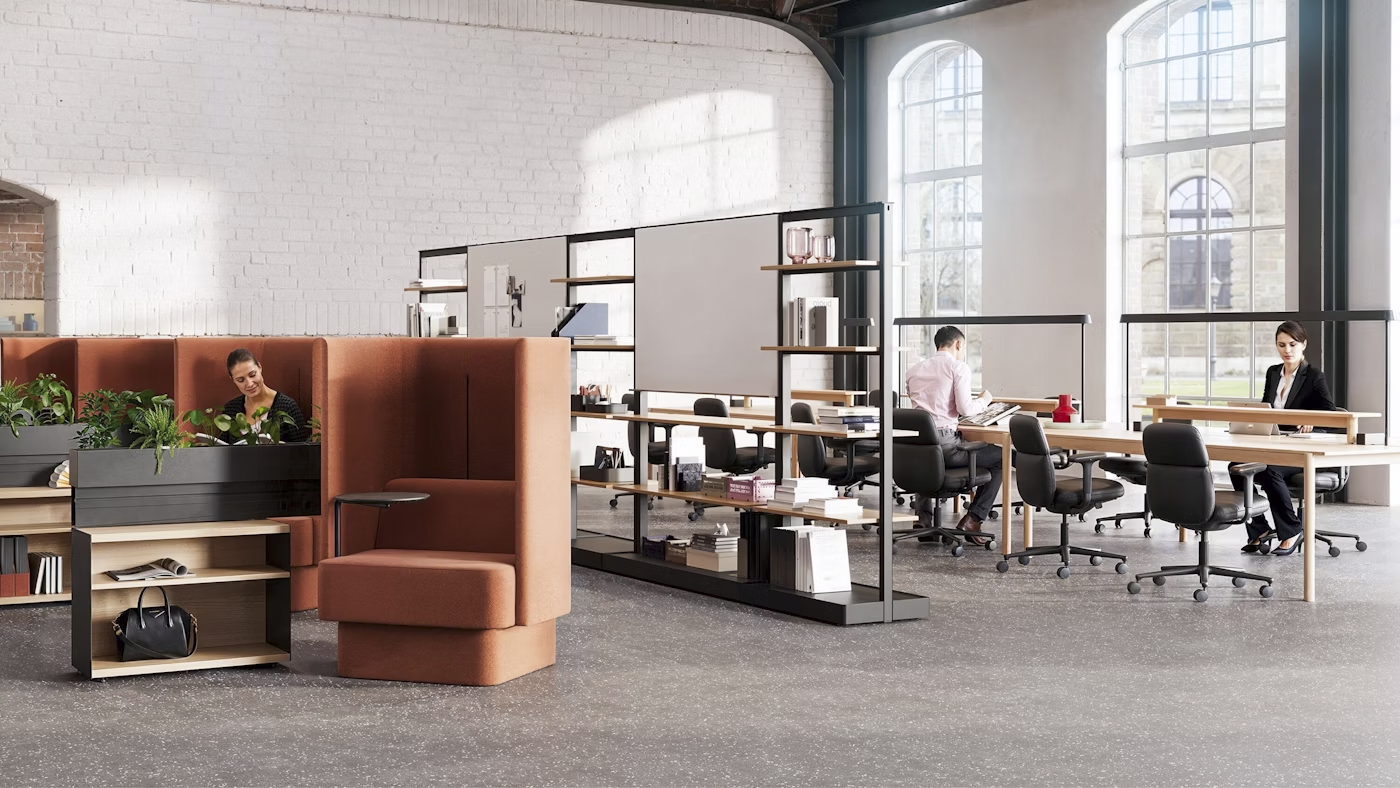Want your organization to thrive? These 3 settings can’t be overlooked
Imagine walking into a vibrant office space filled with a mix of open areas, cozy corners, and private Herman Miller OE1 nooks. In one area, a group of colleagues from various departments engage in animated discussion, their faces lit with excitement. In another, two teammates sit on a Pfister Sofa collaborating over a virtual meeting. Nearby, an individual is deeply focused, working in a quiet, personalized space. This diverse environment isn't just about aesthetics; it's about creating work settings that support the varying needs of employees.
An organization can only thrive when its employees are thriving. Having different work settings allows the organization to better support their working needs. A one-size-fits-all solution is not feasible; workplaces need to help people make the most of their time in the office. Different levels of workplace interactions are crucial, with the workplace itself being key to supporting employees at all levels—from wellbeing to team collaboration.
In today's rapidly evolving workplace landscape, the way we work and interact has experienced many transformations. No longer restricted to traditional office setups, modern work environments recognize the importance of nurturing relationships, supporting various team dynamics, and accommodating individual needs. Understanding the benefits of the following key work settings can help create functional and inspiring work environments: Community, Group, and Individual settings.
Community Settings: The Space to Build Relationships
Community settings are designed to facilitate connections beyond immediate teams. They serve as focal points for fostering a sense of belonging and shared purpose among members of an organization. Learn more about the MillerKnoll Community settings strategies.
Benefits:
Cross-Collaboration: Encourages interaction between individuals and teams that may not regularly interact, promoting idea exchange and cross-functional collaboration.
Cultural Structure: Reinforces organizational culture and values by providing spaces where diverse groups meet and bond over common goals.
Inspiration and Innovation: Sparks creativity through spontaneous discussions and unexpected encounters that can lead to innovative ideas and solutions.
Group Settings: Flexible Collaboration Spaces
Group settings cater to teams of various sizes and functions, offering flexibility to conduct meetings, brainstorming sessions, or collaborative projects efficiently. Learn more about the MillerKnoll Group Settings strategies.
Benefits:
Versatility: Supports different team configurations and work styles, ensuring teams can work in a manner that suits their specific needs—whether they require open collaboration or private discussions.
Technology Integration: Equipped with tools and technology to facilitate seamless hybrid and virtual meetings and communication, enhancing productivity and connectivity.
Comfort and Efficiency: Ergonomic furniture and thoughtful layout design promote comfort and efficiency during group work, reducing distractions and enhancing focus.
Individual Settings: Personalized Spaces for Focus
Recognizing that every individual has unique needs for concentration and respite, these settings provide a sanctuary within a bustling workplace environment. Learn more about the MillerKnoll individual setting strategies.
Benefits:
Privacy and Focus: Offers secluded spaces where individuals can work without interruptions, promoting deep focus and productivity.
Wellbeing Support: Incorporates ergonomic furniture and calming aesthetics to enhance physical comfort and mental wellbeing, contributing to overall job satisfaction.
Flexibility: Adaptable to accommodate different work preferences, whether employees prefer working in isolation or in proximity to others, ensuring everyone finds an environment conducive to their best work.
Conclusion
The modern workplace is not a one-size-fits-all but rather a dynamic ecosystem that serves diverse work needs. Community, Group, and Individual settings each play a crucial role in shaping organizational culture, fostering collaboration, and supporting individual wellbeing. By understanding and implementing these distinct environments effectively, organizations can create spaces that not only accommodate their workforce but also empower them to thrive and innovate in today's interconnected world.



